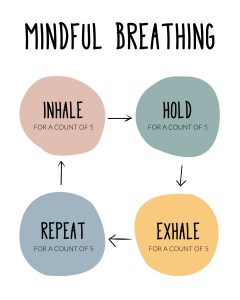Anxiety is a primal response to feelings of fear, danger or threat. At times, some anxiety is good for us. It’s the body and mind’s way to prepare you for a potential dangerous situation. However, experiencing this state of mind constantly can lead to chronic anxiety, which can begin to interfere with your quality of life and how you perceive yourself and others.
When we are anxious our nervous system goes into overdrive. The steroid hormone, cortisol, a stress hormone and adrenaline is released into the bloodstream and pumped around the body. In the brain, the amygdala, or threat detector for the brain, alerts the body to physically respond, getting us ready for a survival response; fight, flight, freeze, fawn or flop. These are behaviours that we engage in when we become anxious. Once the threat has gone our body regulates once again. However, if there is a constant sense of real or perceived threat then the threat detector can be permanently switched on. This can lead to chronic anxiety; a constant feeling of dread, fear or worry.
Our early childhood experiences can impact our anxiety levels, especially if they were less than ideal. Talking with a counsellor about early childhood experiences, such as the effects of school bullying, or other events can help alleviate anxiety symptoms.
Recognising that experiences can impact our nervous system, emotions and behaviour can help you understand why you feel anxious. Identifying anxiety triggers can also help you manage symptoms in more helpful ways.
Breathing techniques can also be helpful ways to reduce anxious feelings and the best thing is, you carry your breath with you all the time. Box breathing (sometimes known as square breathing) is a useful resource to have. Practice it anytime, even when you are calm.
- Inhale for a count of 5
- Hold for a count of 5
- Exhale for a count of 5
- Repeat for a count of 5

